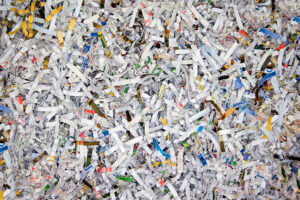Medical waste is any material generated by healthcare facilities that can be potentially infectious or hazardous to human health and the environment. Urine is one of the most common materials generated by healthcare facilities, and it is often a subject of confusion as to whether it is considered medical waste or not. In this blog, we will answer the question, “Is urine considered medical waste?” and provide relevant information on medical waste regulations.
What is Medical Waste?
Medical waste includes all types of waste materials generated by healthcare facilities, including hospitals, clinics, laboratories, and research facilities. These waste materials can be infectious, toxic, radioactive, or hazardous to human health and the environment. Some examples of medical waste include:
- Used syringes, needles, and other sharps
- Infectious waste, such as blood and other bodily fluids, tissues, and cultures
- Pharmaceuticals and chemical waste
- Radioactive materials
- Expired or unused medication
- Sharps waste containers
- Personal protective equipment (PPE)
Is Urine Considered Medical Waste?
Urine is a bodily fluid and is generated in large quantities in healthcare facilities. However, urine is not considered medical waste unless it is contaminated with other infectious materials, such as blood or pathogens. In most cases, urine is considered general waste and can be disposed of in regular waste streams. However, if urine is contaminated with other infectious materials, it must be disposed of as medical waste.
Medical Waste Regulations
Healthcare facilities are subject to federal, state, and local regulations on the management, treatment, and disposal of medical waste. These regulations are in place to protect human health and the environment from potential hazards associated with medical waste.
The Occupational Safety and Health Administration (OSHA) has set guidelines for the handling and disposal of medical waste in healthcare facilities. The guidelines require that medical waste be properly segregated, labeled, packaged, and transported to an authorized facility for treatment and disposal. OSHA also requires that healthcare workers be trained in proper medical waste management practices to prevent accidents and potential hazards.
The Environmental Protection Agency (EPA) also regulates medical waste and has set guidelines for its treatment and disposal. The EPA requires that medical waste be treated and disposed of in an authorized facility and provides guidance on the proper handling and disposal of medical waste.
Conclusion:
Urine is not considered medical waste unless it is contaminated with other infectious materials. Healthcare facilities must properly segregate, label, package, and dispose of medical waste in compliance with federal, state, and local regulations. OnSite Waste Technologies offers innovative waste treatment solutions, such as the TE-5000, that can help healthcare facilities safely dispose of medical waste on-site, reduce their carbon footprint, and minimize their regulatory risk. Contact us today to learn more about our waste treatment solutions and explore new and innovative ways to reduce medical waste.
Sources:
- OSHA Guidelines for Medical Waste Management: https://www.osha.gov/SLTC/etools/hospital/hazwaste/management.html
- EPA Guidelines for Medical Waste Management: https://www.epa.gov/rcra/medical-waste-management#overview










